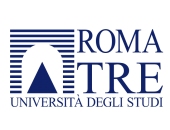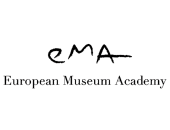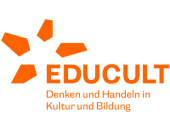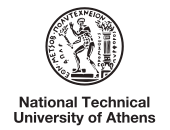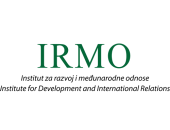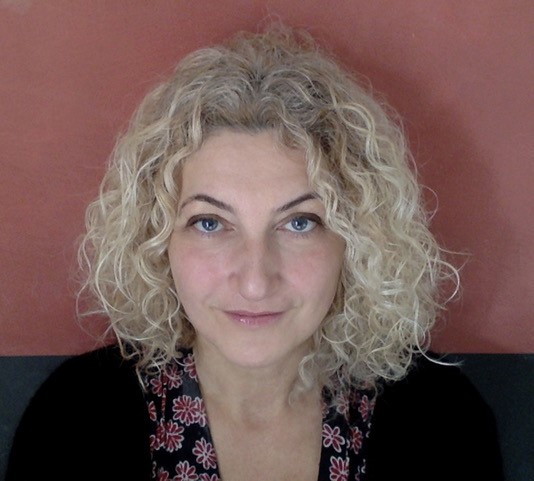
During the lockdown we interviewed Erminia Sciacchitano, member of the SoPHIA Advisory Board, to talk about current trends on research and cultural heritage. She is former Policy Officer at the EC’s Directorate General for Education and Culture and Scientific Advisor of the European Year of Cultural Heritage 2018. Erminia currently serves as Officer in the Cabinet of the Italian Minister of Cultural Heritage, Activities and Tourism (MiBACT).
Good morning Erminia, thank you for joining us. Could you please tell about yourself and your relation to heritage?
I have spent the last 6 years working in the DG for Education and Culture of the European Commission on cultural heritage policy development. My focus has always been on how to drive innovation by creating more synergies between research and project implementation, linking policy development with what really happens in the territory, in the ministries, institutions, etc. I soon realised it was not enough to promote only small innovative projects: one needs to reach out to a “critical mass” to really boost innovation and allow those seeds to generate plants and flowers. I´m also convinced that participatory approaches activate collective intelligence and foster innovation in the sustainable management of cultural resources, but one needs to promote both the bottom up community-based approach and to work at policy level. That´s my way of working: analysing good examples from the ground, the territories, trying to understand success factors and bottlenecks and then leveraging the EU to promote such innovative approaches trough policies and funding. This reflection builds on my previous experience in the Italian Ministry of Culture, where I initiated and managed several innovative projects, but later realised they remained isolated and did not create a necessary “critical mass”. This is why I worked at the signature of the Faro Convention by Italy, which to me was another tool to stimulate both the bottom up and top down approach needed to foster innovation. My experience at the EC allowed me to work within the European policy framework and see the concrete results of this approach. I am happy now to bring back this experience to the Italian Ministry of Culture.
Let me say why I focus on cultural heritage, innovation and activation of collective intelligence. I consider heritage and culture just two elements of a cycle of creation and conservation, thus I don´t see any separation between heritage and culture. They are simply two sides of a coin. Naturally, cultural creation has the right to exist per se, and not only to be conserved or preserved. Artists do not create thinking that something will become heritage. Culture has an intrinsic value.
According to the Faro Convention: “cultural heritage is a group of resources inherited from the past which people identify, independently of ownership, as a reflection and expression of their constantly evolving values, beliefs, knowledge and traditions”. Heritage is therefore a selection of cultural expressions that we transmit to future generations because they reflect social values. These are both linked to our personal identity and our sense of belonging to a community. The encounter with heritage thus is like a journey, as individuals, into our memory and, as members of a society, into our shared past. It helps us understand the path, full of trials and errors, conflicts and human achievements, which brought us to share values like equality, dignity or respect for human rights. This “journey through the past” is especially important in today’s society because we seem to live the eternal present and seem to have lost our capacity to look back or look towards the future. We are also seeing this with this pandemic. We are frightened by today, not learning from the experiences of the past, repeating mistakes, frozen and incapable to plan our future.
It might be difficult to connect the concept of innovation to heritage. Could you provide some examples?
It´s a prejudice: we think that cultural heritage is simply what we take from the past and transmit to future generations. But heritage is not a passive inheritance, you need to take action, to make efforts: to sing a song to your children so they don’t forget, to repeat several times to your apprentice how to apply a crafts technique, to keep always in mind ethic principles when restoring and recovering a site or a painting in order to respect heritage values. Moreover, this point of view dissolves the distinctions between tangible and intangible, since all these dimensions are interconnected when the emphasis is placed on people and values.
But what do we want to pass? What do we select to pass? Heritage is a selection of something that we value as important. If we understand that this value, very often, is related to social, cultural or technical innovation the link becomes clear. Heritage is therefore our shared repository of innovation, valued as important for our societies. In the past, innovation has generated important impacts on society but it might also be relevant today and for our future. If you look at heritage in this way the approach changes completely.
When you look at heritage you should first ask yourself where is the element of social innovation embedded in it? What is the value that society recognises? Because only if you recognise this value you understand why we must make efforts to pass it to future generations. There is another important aspect, and I know it might be controversial: societies have the right to forget and to decide that something does not represent a value anymore. I can mention the case of the Berlin Wall, that was an important element of the memory and shared history of all Europeans, that was destroyed. Some memory is left in a small piece of the wall, but it is hard to oblige society to keep something that had created so many concerns.
As you know, SoPHIA has been formulated under the call of Horizon 2020, “Socioeconomic and cultural transformations in the context of the fourth industrial revolution”. How is this related to impact assessment and the quality of interventions in European cultural heritage sites?
The call was designed in a specific moment when in the DG Education and Culture we were making progresses towards a more integrated approach to cultural heritage at European level also by strengthening cooperation with colleagues from different policy areas. One of the most successful experience was working with colleagues of DG Research. Putting both DG´s together made my dream of better connecting research to implementation and culture policy come true. We started by discussing on possible research streams that were important for cultural policy development. While promoting our policy framework on cultural heritage based on an integrated, cross-cutting, holistic and participatory approach I started questioning myself: what is the impact that we want to produce? Beyond any other impact, one wishes for impact that produces benefits for people. Impacts can be also negative: the atomic bomb is a great innovation with negative impacts. So, I was really thinking that in this theoretical framework there was an element missing and we needed to start a deeper reflection on the desired and non-casual impact of our policies and actions. Another question that was continuously coming up was the lack of impact indicators for culture and cultural heritage. I thought that this was strongly connected to the previous issue and therefore started reflecting on quality issues. If we don´t define our quality goal, the direction we want to take, the type of benefits we want to bring to people and communities, how can we measure the desired impact of our policies and actions? So I started thinking on quality as the final element of the theoretical policy framework on cultural heritage.
At the same time, we received several alerts on the use of EU funds for cultural heritage, especially when fund mechanisms had to respond to different policies objectives and priorities, from development to tourism, agriculture, etc. It was clear that the diverse decision makers implied in the complex governance of investments were not giving appropriate relevance to cultural values. We realised that this was probably because we have not really clarified the quality issue: if investments on cultural heritage are only meant as a way to increase the number of tourists without taking into account authenticity, sense of place or respect for elements which are linked to the identity of a community, then the decisions might be taken in a way that can destroy the most important valuable elements of a site, leading to the loss of an asset although, apparently, investing a lot of money on it.
I started with a very focused project together with ICOMOS on the impact on cultural heritage of EU investments and we discussed in depth what is meant by quality in this specific area and with this specific angle. To open the debate was very important: is the concept of authenticity the same throughout Europe? We had discussed this topic among professionals, often only at national level, but we needed to engage the wider society, to open the discussion beyond borders and engage the research community. This important work produced the European quality principles for EU-funded interventions with potential impact upon cultural heritage, published by ICOMOS, that I consider one of the most important achievements of the European Year of Cultural Heritage.
At the EC we thus realised that we needed to stimulate research and work towards a better understanding of what is meant by quality, because I’m convinced that if we don’t understand well this dimension, we’ll never find the “famous” indicators, we will never measure what is the impact of our policies. So that’s why SoPHIA is a reality.
I know that SoPHIA is very challenging because it enlarges the scope to the cultural sphere as a whole. It can be risky and tricky; it was easier when we focused only on heritage. Now you really need to look at all the cycle of creation and conservation and reflect on the impact of cultural investments on the whole of society.
But this is promising. We cannot just promote an integrated and participatory approach without really having a clear idea of what we want all together. We need to implement the so-called upstream approach by setting up integrated policies in order to produce benefits in the desired direction. We want to be more strategic in our policy making, and SoPHIA is crucial in this regard. Even if we don’t grasp the whole dimension and are only able to identify some key and important elements. And this was made possible only because we succeeded putting together culture and research policy. I think this is a huge success.
Can you provide a couple of examples of good interventions on heritage in Europe?
Well, the European Year of Cultural Heritage (EYCH) was successful, because we all worked with the same principles in mind for all EU countries. The integrated, participatory and holistic approach worked very well, multiplying the results and benefits, and this is very important. It was successful as well because we mainstreamed culture in the new programming period. I can say now, from the point of view of Italy, that the mentality has changed among professionals as they now accept people-centred and participatory approaches. By the way, Italy has recently ratified the Faro Convention, which is a step ahead. It was an important shift, not easy nor given for granted, and professionals understand better that, beyond their specialized work, they play an important role in society. Furthermore, the EYCH succeeded on many other fronts by working better with the education sector, the colleagues in Erasmus, with the colleagues in risk management and the European Civil Protection Mechanisms, etc. All policy areas where we were not clearly identified before. Of course, it’s very difficult to measure success because people now think that it has always been like this. But let’s take this as a success.
SoPHIA aims at contributing to the reflection on impact assessment and quality of interventions in European historical environment and cultural heritage by proposing an impact assessment model that takes into account the social, cultural, economic and environmental domains, identifying best practices, and drafting policy briefs with recommendations. What challenges and opportunities do you foresee in this endeavor?
First the complexity, the parameters that you have to take into account are so many that you need to get in touch with many different policy areas and professionals. It’s complex to frame, but I also think that there momentum because a lot of work has been done, so you can rely on previous research. The other challenge is how to find the language that will speak to the people coming from different policy areas, since you need to send clear messages, engage decision makers, explain how to take into account the needs of the cultural and heritage sectors. This message should be very distinct and very clear, simple. I think this is the most challenging part, but we know that we have it all in our hands to make it a reality: this is my message.
You raised the answer to this question already, but I don’t know if you want to deep into it. How can communities benefit from research programs like SoPHIA? What is the gain for citizens when it comes to high quality interventions in cultural heritage in their community?
People need to be heard and reassured that their opinion is taken into account. We give for granted that we do things that are for the good of the people. But are we really listening? This is why it is important to engage communities in these projects and experiences. Not long ago I visited Madrid and its very famous project, “Matadero”. I was really impressed by its capacity to act as an incubator for the cultural sector but also reach out to the local community. I saw families going there and their kids play games. Communities really need to see that cultural infrastructures are a concrete resource for them. We should come out of our cloud and connect what we do with the real life of people. Every small cultural centre, idea, project, should be in dialogue with the local community. It gives fresh air, energy and, especially in this moment, it connects culture with the social fabric, a key element in Italy and Spain considering our way of life. I think it’s very important now that the cultural sector finds a way to keep this flame alive. “Matadero” is a very good and concrete example. We should invest funds in projects such as this because they benefit the local community and not only tourists.
It sounds a fundamental way to make it sustainable, through the involvement of citizens. Otherwise…
Otherwise for whom does one work? We have the social dimension in mind, but sometimes we just don’t turn principles into practice.
We came to the end. I don’t know if you’d like to add anything else.
My final thought is that I wanted to congratulate you all for your work: you are the perfect team and what you do is really important.
Thank you so much.

